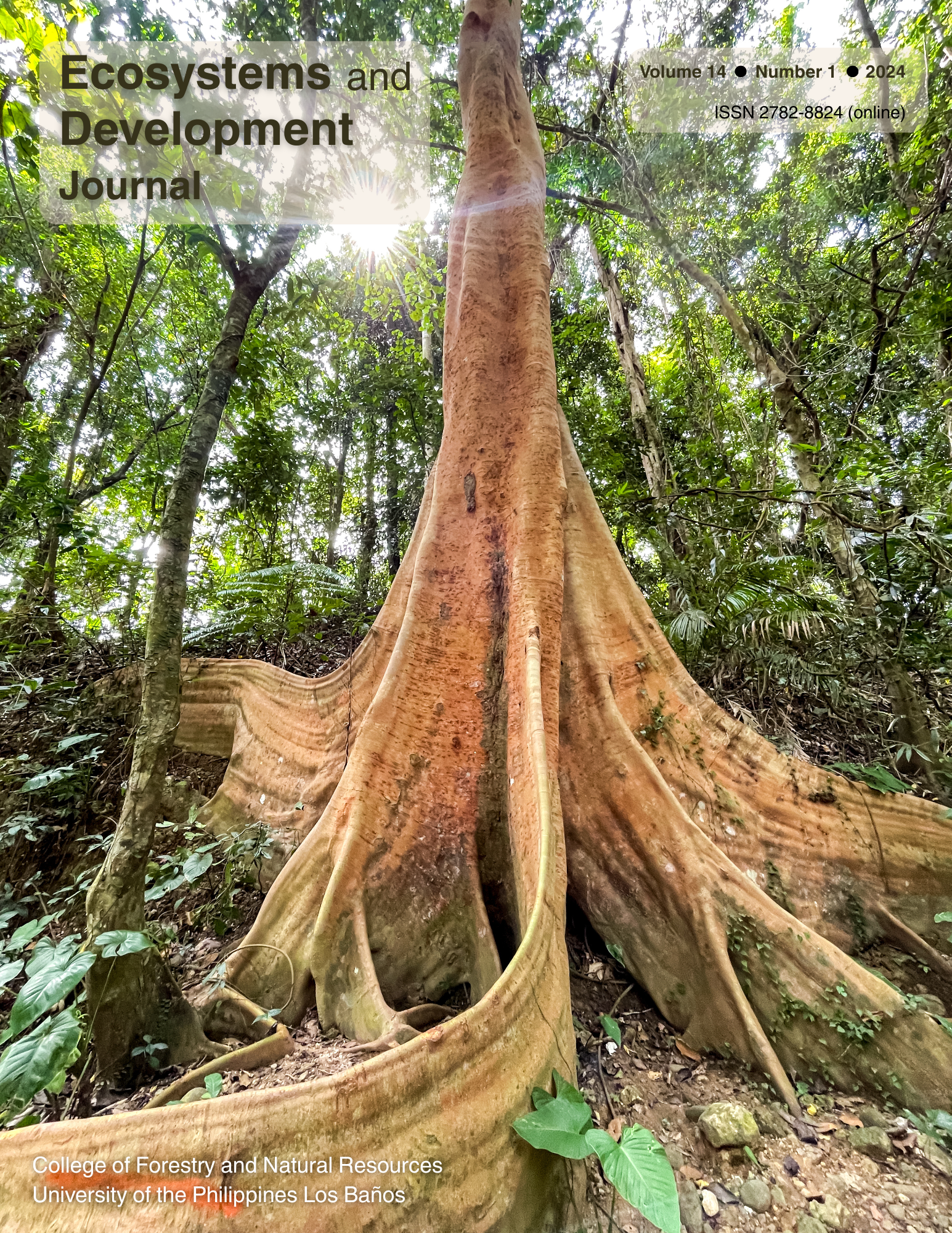Experiences of migrant Aeta communities with the National Greening Program implementation: The case of Sitio Ditao, Cadaclan, Pantabangan, Nueva Ecija, Philippines
Abstract
The National Greening Program (NGP), a national reforestation initiative towards economic security and poverty reduction, has been involved in upland communities since 2011. In 2021, the program shifted to the Family Approach to Reforestation, where benefits are distributed directly to individual families instead of through People’s Organizations (POs). With the change in implementation, this study analyzed the practice of equitable benefit-sharing after the shift to the NGP Family Approach through the case of the migrant Aeta community of Sitio Ditao, Barangay Cadaclan, Pantabangan, Nueva Ecija, Philippines. Using ethnographic methods such as in-depth interviews and participant observation to conduct immersion in and full enumeration of the community, this study established the ethnohistory of the Sitio Ditao Aeta community, understood the context of their involvement in the NGP, and determined the changes in their experiences with the NGP due to the changes in its implementation. The experiences of the Sitio Ditao Aeta community demonstrated that social equity was more evident under the family approach than in the former scheme since it allowed individuals to have more agency in decision-making, gave them more control over the benefits and opportunities, and maintained the work specificity of the gender ideology of the community. Despite these positive changes, the family approach also had negative repercussions in terms of income and leadership. As NGP sites became smaller, fewer people were involved when the payment for site development decreased. Mobilizing the organization's members became more difficult because the benefits went directly to the beneficiaries. Hence, the migrant community preferred the former strategy despite the social equity provision of the family approach. This preference has implications that should be considered for the future directions of the NGP and other forest conservation projects.


